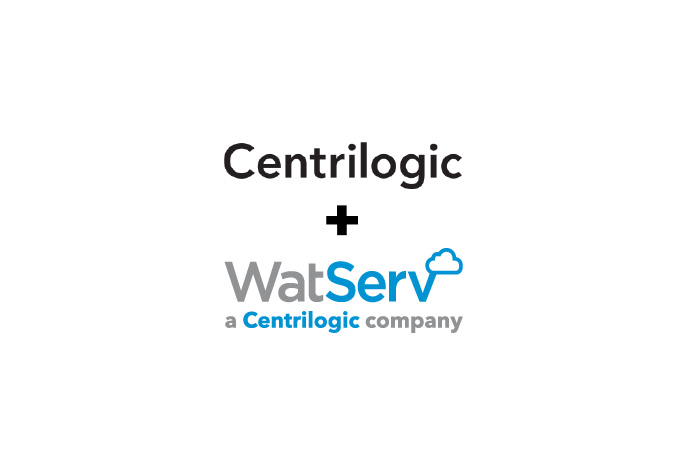9 Cloud Security Risks for Businesses and How to Address Them
By WatServ
October 28, 2022
Cloud computing, when managed appropriately, is generally considered more secure than on-premise alternatives. It’s also become far more ubiquitous over the past few years, given the transition to remote and flexible work environments.
But nothing is infallible and the rise in cloud computing use also means growing concerns around bad actors trying to gain access. IT professionals, including CIOs, are understandably concerned about security breaches and cyberthreats.
In this article, we’ll outline what cloud computing is, possible security risks, and how to safeguard against cyberattacks to make sure your data and assets are protected at all times.

What is Cloud Computing?
Cloud computing is on-demand delivery of IT resources over a network (the internet), usually with pay-as-you-go or reserved instance pricing. With cloud computing, companies purchase licenses to use a third-party’s physical data centers and servers, allowing them to access technology services, such as storage and databases, on an as-needed basis.
While some personal services like Google Drive or Apple iCloud are free, other public cloud offerings, such as Microsoft Azure or AWS, are paid subscription services that are incredibly powerful and built for businesses.
As more companies shift to public cloud computing services, there are cloud security risks to watch out for. Here are 9 of those risks.
9 Cloud Security Risks Businesses Should Watch For
1. Insider Threats
One of the biggest security threats comes from the inside. Unfortunately, personnel do present a risk. Given the ease of access to cloud databases, assets can be accessed by a number of unexpected parties like former employees or contractors, or anyone with cloud-linked devices.
Insider threats aren’t necessarily malicious, however. Lack of information and training about common cloud computing security risks and best practices can lead to significant loss. In fact, phishing attacks are one of the most prevalent security threats, and if employees aren’t aware of what to look out for, an unsuspecting person could potentially leave the entire system vulnerable.
Education and training is the most important way to mitigate against insider threats. For even stronger security, consider multifactor authentication processes.
2. Data Breaches
Data breaches are always top of mind for companies, and even more so for companies with sensitive data, such as customer or financial information, or healthcare data. Breaches like these not only seriously compromise the safety of everyone involved, but also company reputation and even the future of the business.
Data breaches can happen in a number of ways, through malware injections, insider threats, and account hijacking, to name a few. There are preventative measures that can be taken, including employee and user education, secure APIs, and data encryption.
3. Malware Injections
Malware injections are a type of attack that lets the attacker inject code, which allows remote commands that can read or modify a database, change data, or alter a website. Malware injections can happen through lack of employee training and human error, or unobtrusively and with no action required on the part of the cloud user.
Malware injections are a particular risk because they allow for ongoing infiltration so that hackers can access company information for as long as the malware is undetected. Attackers can view, copy, delete or falsify confidential data.
To guard against malware injection attacks, it’s important to always update software, educate personnel about not downloading or opening attachments, or clicking links and popup windows. Limiting file sharing is also advisable.
4. Account Hijacking
Account hijacking is an umbrella term for a variety of cyberattacks, which can include phishing scams to procure passwords, or blatant account hacking to gain access to cloud databases through an employee profile.
The best ways to prevent account hijacking is to ensure users are using multifactor authentication, silo access and segregate duties, and always have a verification process in effect for when unusual or suspicious activity occurs.
5. Cloud Misconfiguration
Cloud misconfiguration is one of the top risks of cloud security. Some of the most common misconfiguration problems include public accessible storage buckets, exposed credentials in public clouds, and insecure resource access controls.
To reduce this risk, can help with proper cloud configuration and consistent monitoring. While undertaking this can be daunting for CIOs and IT teams, this is also something a third-party security provider can look after for you.
6. Abuse of Cloud Services
Cloud computing has significant advantages for companies, primarily because it allows them to store and manage vast quantities of data without the monetary investment of physical space for onsite servers and the monitoring and maintenance required.
The issue with this though is that cybercriminals can gain access to your cloud through use of the same host, spreading their malware.
To reduce the risk of abuse of cloud services, continual monitoring, maintenance, and creating a preparation plan if this does happen will help organizations be better prepared.
7. Insecure Interfaces and APIs
APIs can potentially include vulnerabilities due to misconfiguration and coding, and lack of authentication and authorizations. These are just a few of the issues. As a result, this can leave you open to cyberattacks.
Managing and securing APIs is a challenging task and for organizations that use hybrid cloud systems, or that use multiple cloud providers, the issue can become compounded. A dynamic environment requires a flexible and proactive approach, which is why a lot of companies choose to partner with a third-party security provider that can monitor and maintain cloud services on a continual basis.
8. Endpoint Device Insecurity
Endpoint devices are the devices that employees either bring themselves or are issued by a company, through which they access cloud services remotely. These devices include laptops, mobile phones, tablets, printers, virtual machines, servers and so forth. They can also include IoT devices like smart speakers, cameras, lighting, etc.
With the rapid expansion of remote work, endpoint devices are everywhere. It can be difficult for IT departments to keep track of all devices and employee behaviors when they are using them. Bring your own device (BYOD) policies introduce an additional layer of complexity.
To make sure endpoint devices are secure, employee training and awareness is important. IT personnel should make sure patches are up to date, antivirus software and firewalls are being used, and confidential data is not being cached. Multifactor authentication is also recommended.
9. Lack of Cloud Security Strategy
Like all business workflows and operations, a cloud security strategy is important to ensure data and assets are kept safe. A cloud security strategy should be a collaborative effort between CIOs, IT personnel, and other parties who may be affected by any cloud cyberattacks.
A cloud security strategy should include consideration of business objectives, potential risks and security threats, strategies in the event of an attack, and key figures in the execution of that plan. A strategy should also include compliance in cloud services and infrastructure design and decisions.
It’s reasonable that developing and implementing a cloud security strategy is a big undertaking. A third-party security expert will help you with this process. They can test for vulnerabilities, create a plan, monitor and maintain, and help with any onboarding or offboarding.
How to Safeguard Against Cloud Security Threats
Cloud computing is cost-effective, adaptable, scalable, and above all, a safe way to work with data and communications within an organization.
But just because it’s safe, doesn’t mean that risks can’t arise. Being unprepared is one of the biggest risks – and also challenges – for any organization. With these nine risks to watch for, there are always ways to safeguard against cloud security threats. Here are some best practices to consider:
- Understand common cloud computing security risks and threats
- Take a full inventory of the potential risks of your cloud computing environment. You might need the assistance of experts to help you with this.
- Create a culture of cloud security and awareness. Continually educate your organization on best behaviors.
- Prepare a cloud security plan and review it regularly. Cloud security experts can help you run an emergency simulation to check for weaknesses in your security.
- Choose a security-minded cloud provider who will partner with you to ensure your cloud computing environment is secure.
Work With a Trusted Cloud Security Partner
Working with a trusted cloud security partner will help safeguard your IT infrastructure and assets, and mitigate the risk of a cybersecurity attack.
A trusted partner will:
- Monitor and manage cloud computing security threats
- Communicate and address suspected security issues
- Stay up to date on evolving security problems
- Support your team
- Keep your company’s security top-of-mind
With more than 15 years of experience and ranked as one of Canada’s Top 100 Solution Providers, WatServ is a trusted cloud security provider that can help your business keep its cloud computing environment, data, and assets secure.
To learn more about how WatServ can help you, talk to an expert today.
About
WatServ is an IT solutions provider that helps organizations digitally transform through cloud technologies and managed services.
Serving clients as a trusted advisor since 2006, WatServ provides experience-tested, strategic solutions across all stages of the digital transformation journey. Clients choose WatServ to migrate infrastructure and applications to the cloud, secure critical data, implement disaster recovery, deploy virtual desktop, enable data-readiness for productivity solutions and manage IT environments.
Our clients span a broad range of industries, and we’re a global supplier of IT services for many Brookfield Portfolio Companies. To help our mid-size clients, we provide scalable offerings that simplify cloud adoption and drive business optimization. For enterprise clients, we co-create cloud solutions that enable stability and efficiency for complex IT tools and processes.
With more than 15 years of experience, WatServ has a track record of delivering quantifiable business results and a superior client experience. Ranked as one of Canada’s Top 100 Solution Providers for the last three years in a row, WatServ is always on.

